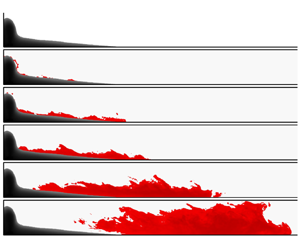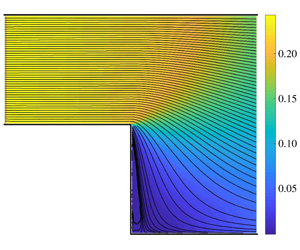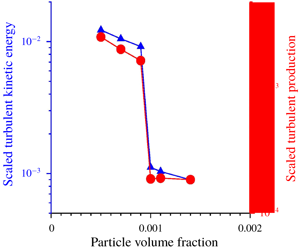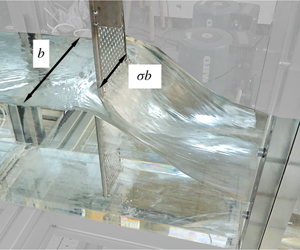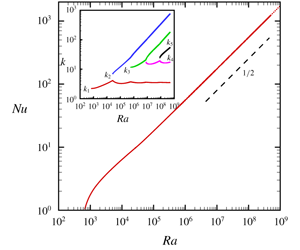Contents
JFM Papers
Dispersion of gyrotactic micro-organisms in pipe flows
-
- Published online by Cambridge University Press:
- 24 February 2020, A18
-
- Article
- Export citation
Water wave transmission and energy dissipation by a floating plate in the presence of overwash
-
- Published online by Cambridge University Press:
- 21 February 2020, A19
-
- Article
- Export citation
Experiments on the sedimentation front in steady particle-driven gravity currents
-
- Published online by Cambridge University Press:
- 24 February 2020, A20
-
- Article
-
- You have access
- Open access
- HTML
- Export citation
Detailed force modelling of the secondary load cycle
-
- Published online by Cambridge University Press:
- 21 February 2020, A21
-
- Article
- Export citation
Free-molecular and near-free-molecular gas flows over backward facing steps
-
- Published online by Cambridge University Press:
- 24 February 2020, A22
-
- Article
-
- You have access
- Open access
- HTML
- Export citation
The effect of a strong density step on blocked stratified flow over topography
-
- Published online by Cambridge University Press:
- 24 February 2020, A23
-
- Article
- Export citation
An experimental study of turbulent vortex rings in superfluid 4He
-
- Published online by Cambridge University Press:
- 24 February 2020, A24
-
- Article
- Export citation
Oscillatory spontaneous dimpling in evaporating curved thin films
-
- Published online by Cambridge University Press:
- 24 February 2020, A25
-
- Article
- Export citation
Shock wave interaction with a polygonal bubble containing two different gases, a numerical investigation
-
- Published online by Cambridge University Press:
- 26 February 2020, A26
-
- Article
- Export citation
Receptivity characteristics of under-expanded supersonic impinging jets
-
- Published online by Cambridge University Press:
- 26 February 2020, A27
-
- Article
- Export citation
Disruption of turbulence due to particle loading in a dilute gas–particle suspension
-
- Published online by Cambridge University Press:
- 26 February 2020, A28
-
- Article
- Export citation
Uncovering Townsend’s wall-attached eddies in low-Reynolds-number wall turbulence
-
- Published online by Cambridge University Press:
- 26 February 2020, A29
-
- Article
- Export citation
Feedback control of flow-induced vibration of a sphere
-
- Published online by Cambridge University Press:
- 26 February 2020, A30
-
- Article
- Export citation
Bistability of bubble and conical forms of vortex breakdown in laminar swirling jets
-
- Published online by Cambridge University Press:
- 27 February 2020, A31
-
- Article
- Export citation
Upper limit for tidal power with lateral bypass
-
- Published online by Cambridge University Press:
- 27 February 2020, A32
-
- Article
-
- You have access
- Open access
- HTML
- Export citation
Exhausting the background approach for bounding the heat transport in Rayleigh–Bénard convection
-
- Published online by Cambridge University Press:
- 28 February 2020, A33
-
- Article
-
- You have access
- Open access
- HTML
- Export citation
Wall-to-wall optimal transport in two dimensions
-
- Published online by Cambridge University Press:
- 28 February 2020, A34
-
- Article
- Export citation
Evolution of plumes and turbulent dynamics in deep-ocean convection
-
- Published online by Cambridge University Press:
- 28 February 2020, A35
-
- Article
-
- You have access
- HTML
- Export citation
On the stagnation point position of the flow impinging obliquely on a moving flat plate
-
- Published online by Cambridge University Press:
- 28 February 2020, A36
-
- Article
- Export citation
Mean flow anisotropy without waves in rotating turbulence
-
- Published online by Cambridge University Press:
- 28 February 2020, A37
-
- Article
-
- You have access
- Open access
- HTML
- Export citation



